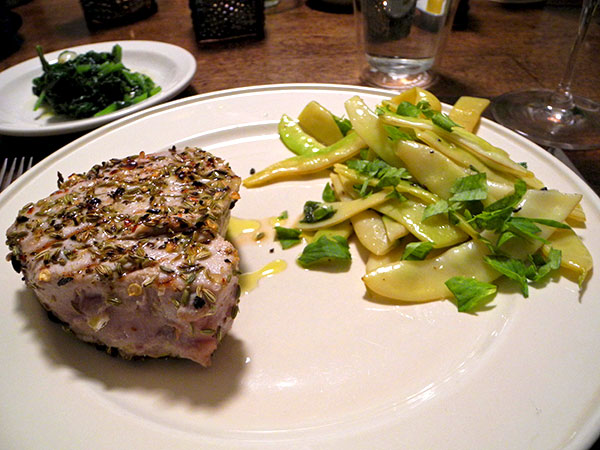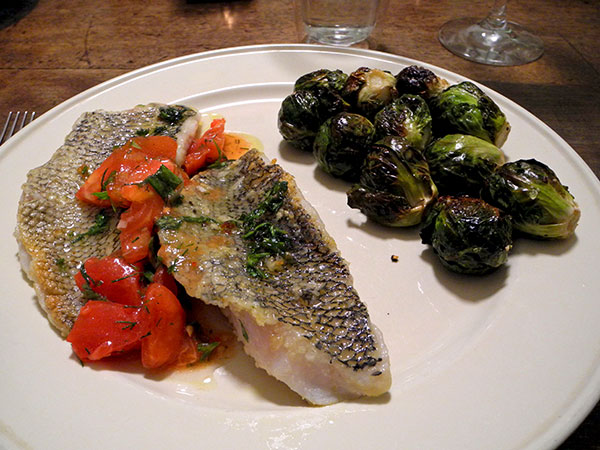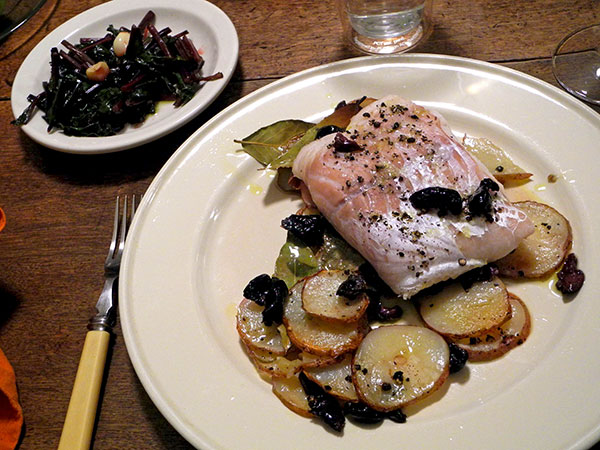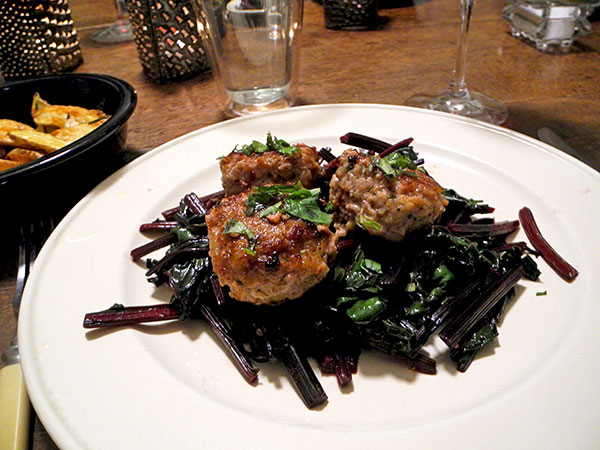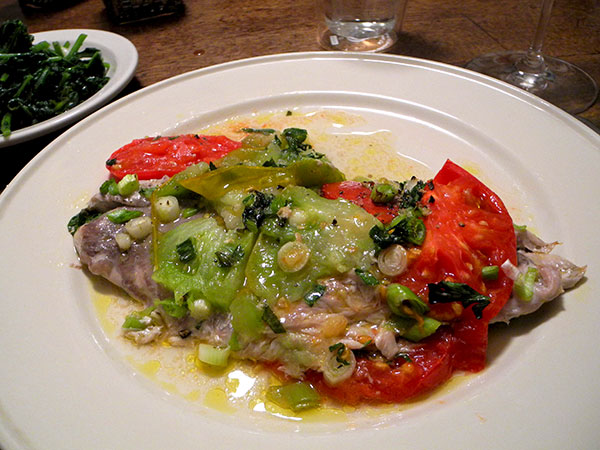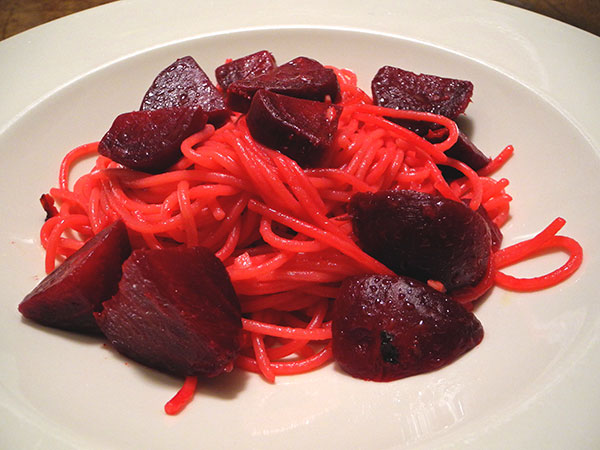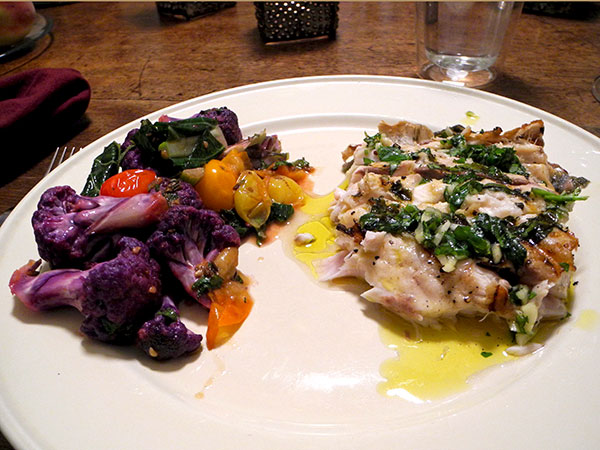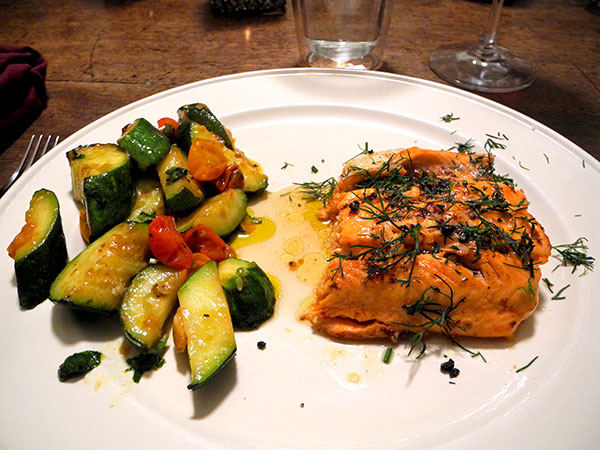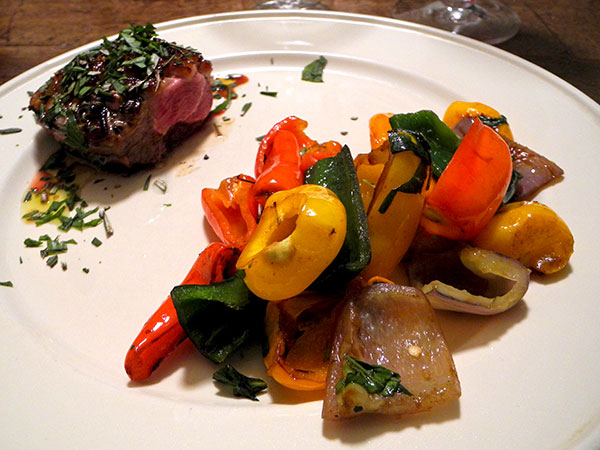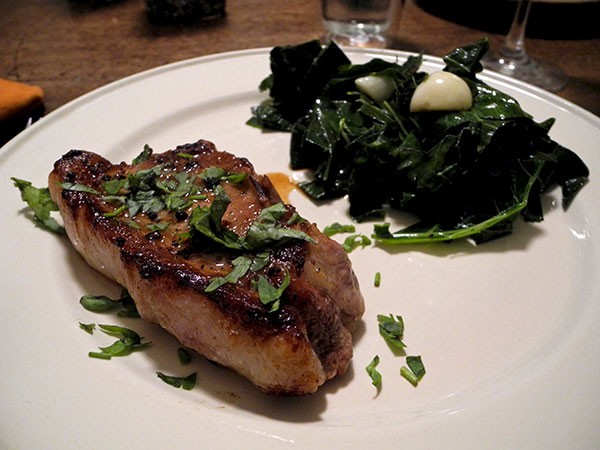
This simple approach to cooking pork chops is one of my favorites; in fact it’s one of my favorite recipes period. It’s foolproof, and the pork ends up incredibly juicy each time, and it takes a total of only about 20-25 minutes, most of it unattended. It’s from the “Italian Two Easy” London River Cafe cookbook, and I like to share it at every opportunity I get. This is my own, slightly-altered version of the recipe for the chops:
Pork Chops with Lemon
2 pork chops, cut 1 inch thick (if 1 1/2 inches, increase each of the suggested 8 minute cooking times to about 10 minutes)
1/2 lemon
Heat an enameled cast-iron pan* until very hot. Heat the oven to 400ºF.
Thoroughly dry and season each chop, put them in the pan and sear quickly on each side. Remove the pan from the heat.
Squeeze the lemon juice over the chops, and place the squeezed lemon half in the pan along with the chops. Roast in the oven for about 8 minutes. Press the lemon half onto the chops and baste with the juice. Roast for another 8 minutes or until firm to the touch (think, checking for the doneness of a steak).
OPTIONAL: Finish with a sprinkling of a chopped herb or herbs, or perhaps some topped with warmed cherry tomato halves and/or the herb(s).
* If no enameled cast-iron pan is available, the chops can be seared in one that is not, then transferred to an oven-proof ceramic or glass pan before being out into the oven, perhaps adjusting for the cooking time because the oven pan will not have been heated before being put into the oven.
This simple approach to cooking pork chops is one of my favorites; in fact it’s one of my favorite recipes, period! It’s foolproof, and the pork ends up incredibly juicy each time, and it takes a total of only about 20-25 minutes, most of it unattended. It’s from the “Italian Two Easy” London River Cafe cookbook, and I like to share it at every opportunity I get. This is my own, slightly-altered version of the recipe for the chops:
Pork Chops with Lemon
2 pork chops, cut 1 inch thick (if 1 1/2 inches, increase each of the suggested 8 minute cooking times to about 10 minutes)
1/2 lemon
Heat an enameled cast-iron pan* until very hot. Heat the oven to 400ºF.
Thoroughly dry and season each chop, put them in the pan and sear quickly on each side. Remove the pan from the heat.
Squeeze the lemon juice over the chops, and place the squeezed lemon half in the pan along with the chops. Roast in the oven for about 7-8 minutes. Press the lemon half onto the chops and baste with the juice. Roast for another 7-8 minutes or until firm to the touch (think of using your finger to check for the doneness of a steak).
OPTIONAL: Finish with a sprinkling of a chopped herb or herbs, or perhaps some topped with warmed cherry tomato halves and/or the herb(s).
* If no enameled cast-iron pan is available, the chops can be seared in one that is not, then transferred to an oven-proof ceramic or glass pan before being put into the oven, adjusting for the cooking time because the second pan will not have been heated before being put into the oven.
